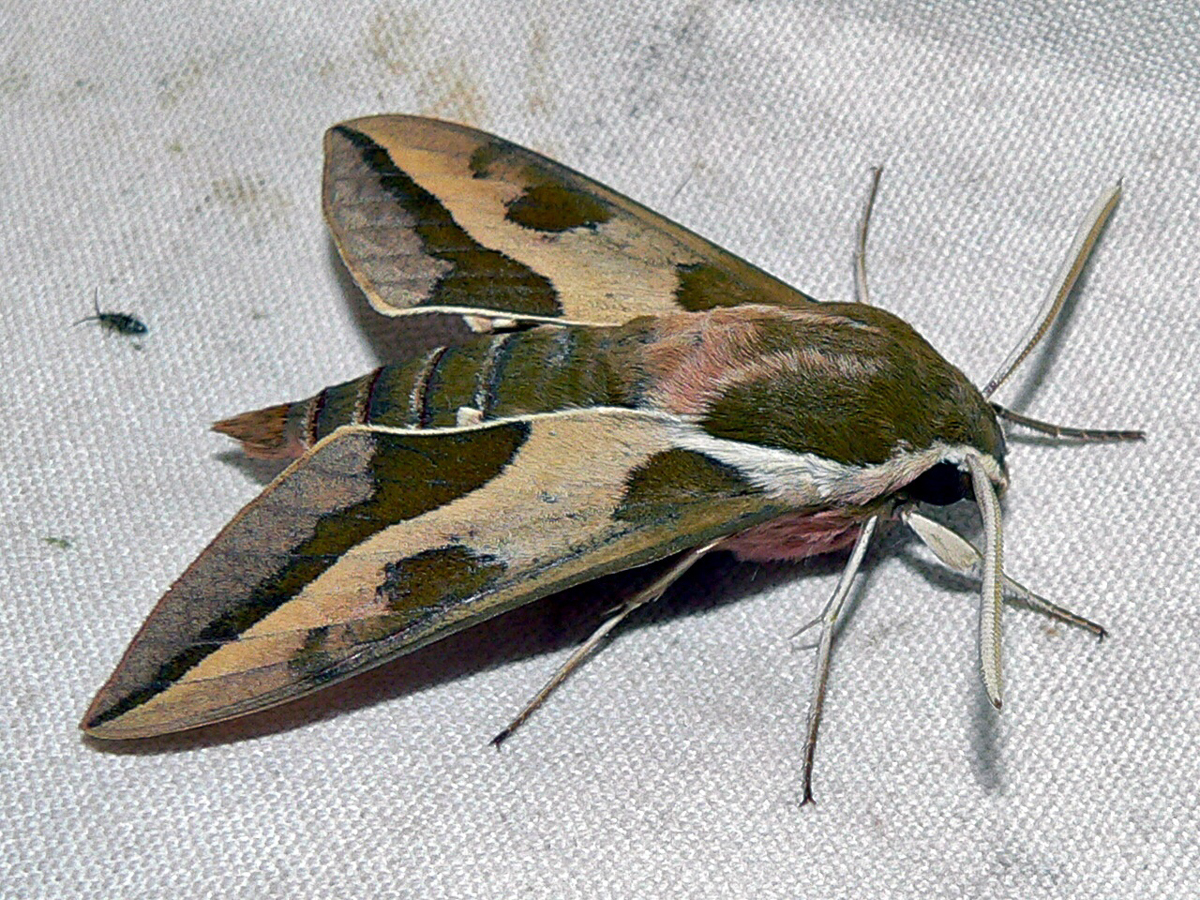
Photo © berniedup
Hyles euphorbiae, the spurge hawk-moth, is a European moth of the family Sphingidae. It has been found in Pontresina, Switzerland (1,805 m (5,922 ft) above sea level). This hawk moth is used as an agent of biological pest control against the noxious weed leafy spurge (Euphorbia virgata), but usually only in conjunction with other agents. The larvae consume the leaves and bracts of the plant. The species was first described by Carl Linnaeus in his 1758 10th edition of Systema Naturae.
The Spurge Hawk-Moth - Fore wings grey, with an almost square olive-brown blotch; at the base another olive-brown blotch near the middle, and a long oblique band of the same colour, commencing in a point at the extreme apex of the wing, and gradually growing wider until it reaches the margin, where it is very broad: hind wings pink, with a black blotch at the base, and a black band half-way between this black blotch and the margin, and a snowy-white blotch at the anal angle: thorax and body olive-brown, with a white line on each side of the thorax just at the base of the wings; this line runs on each side along the head just above the eye, and the two meet at the nose; the body has on each side at the base two square black spots and two square white spots, and beyond them, nearer the apex, and also on each side, are three white lines.
The caterpillar is smooth and black, with innumerable whitish dots; there are also eleven large spots of the same colour arrayed in a row on each side of the back, and beneath these as many spots of the same size and of a bright coral-red colour; the head is of the same coral-red colour, and a line of the same colour runs all along the back, from the head to the horn; the horn is red at the base and black at the tip. It feeds on sea-spurge.
The chrysalis is pale brown and delicately lined and dotted with black in the manner of network; it buries itself in the loose dry sand on the sea coast.
The eggs are covered with liquid gum, which enables them to stick on the small leaves of the spurge. In a fortnight these hatch and produce little black caterpillars; the white and red spots appear as the caterpillar increases in size, and in a few weeks it becomes a most beautiful object, and so conspicuous as to attract the sea-gulls and terns, which devour them in numbers. We have never had the pleasure of finding either the caterpillar or perfect moth. Our description of the caterpillar is taken from the Entomological Magazine.
This article incorporates text from a free content work. Licensed under public domain. Text taken from An Illustrated Natural History of British Moth, Edward Newman, Hardwicke and Bogue.
Source: Wikipedia
The primary larval foodplant is spurges (Euphorbia spp.).